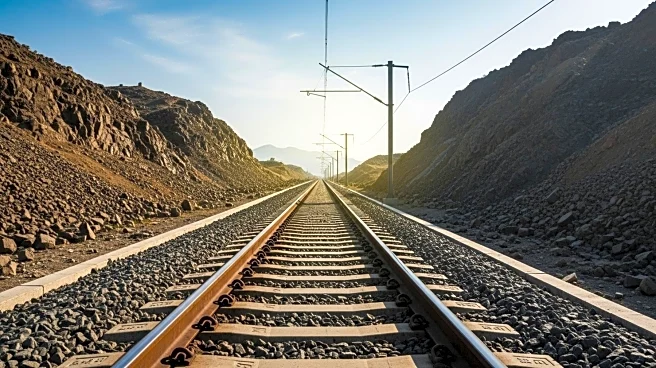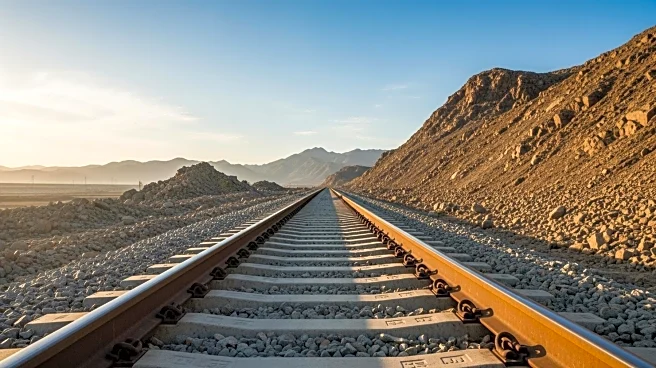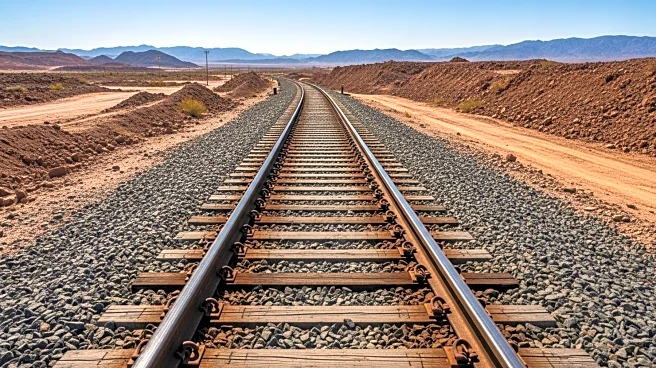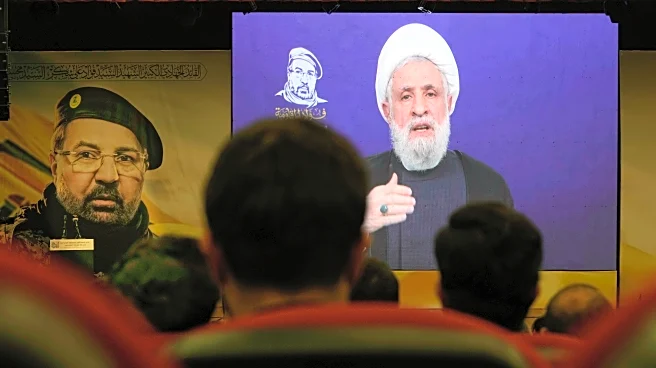What is the story about?
What's Happening?
The Pakistani government has approved a bridge financing proposal worth $390 million to construct railway tracks in Balochistan. These tracks are intended to facilitate the transportation of large volumes of export material from the region's mines. The decision was announced in a government statement on Thursday, highlighting the strategic importance of enhancing infrastructure to support mining operations in Balochistan. The financing aims to improve logistical capabilities, thereby boosting the export potential of mineral resources extracted from the area.
Why It's Important?
The approval of this financing plan is significant for Pakistan's economic development, particularly in the mining sector. Balochistan is rich in mineral resources, and the new railway infrastructure will enable more efficient transportation of these materials to export markets. This could lead to increased revenue from mineral exports, contributing to the country's economic growth. Additionally, the project may create job opportunities and stimulate local economies in Balochistan, a region that has historically faced economic challenges.
What's Next?
Following the approval, the next steps involve the actual construction of the railway tracks. The government will likely oversee the implementation of the project to ensure timely completion and operational efficiency. Stakeholders, including local communities and businesses, may anticipate increased economic activity as the project progresses. The government might also explore further infrastructure projects to complement the railway tracks, enhancing the overall export capabilities of the region.
Beyond the Headlines
The development of railway infrastructure in Balochistan could have broader implications for regional stability and economic integration. Improved transportation links may foster better connectivity within Pakistan and with neighboring countries, potentially enhancing trade relations. Additionally, the project could serve as a model for future infrastructure investments in other resource-rich areas of the country.
AI Generated Content
Do you find this article useful?















